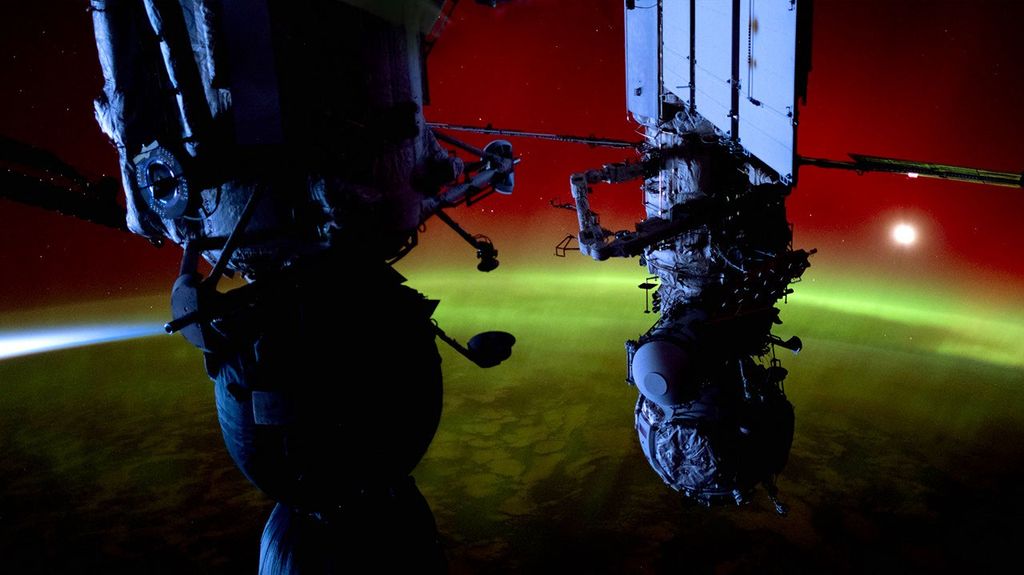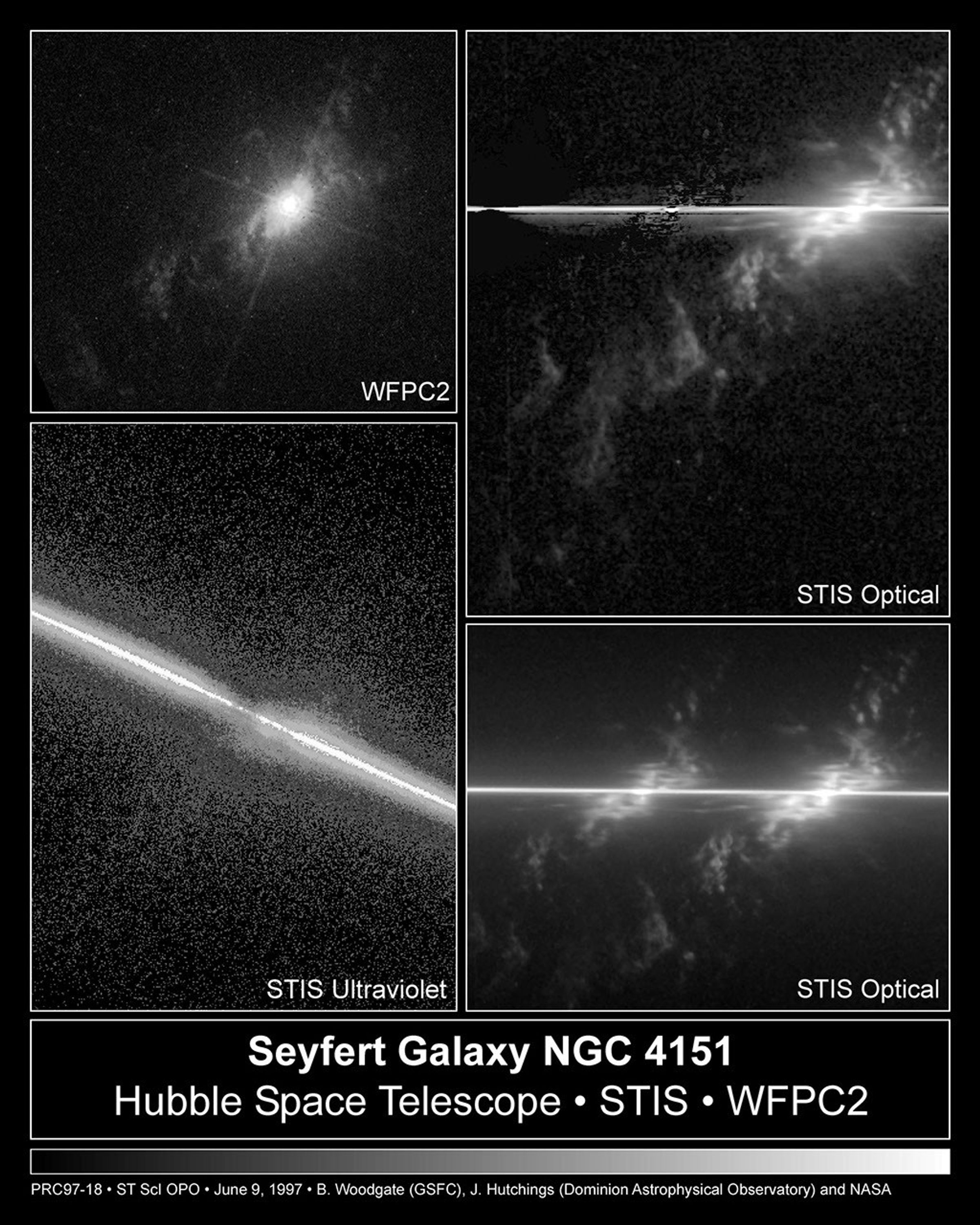BACKGROUND INFORMATION: LOOKING ALONG A FUNNEL OF LIGHT FROM A HIDDEN BLACK HOLE
In a single Hubble Space Telescope Imaging Spectrograph (STIS) CCD observation, astronomers have measured the velocities of hundreds of gas blobs caught up in a twin-cone beam of radiation emanating from a supermassive black hole at the core of galaxy NGC 4151. Further observations using STIS's Multi-Anode Microchannel Plate Array (MAMA) detectors reveal hot gas from deep within the throat of the beam, near the vicinity of the black hole, as well as unique details of absorbing clouds along our line of sight to it.
Besides revealing fast-moving knots of gas in unprecedented detail, down to a resolution of four light-years (0.05 arc seconds), STIS also simultaneously measured the motions of all of blobs through the shift in the color of their light (Doppler effect) due to their motion toward or away from us.
In the standard model for such an active galactic nucleus, a black hole devours gas and dust, and some of the material is converted into energy and radiated into space. The rotation of the "central engine" also focuses radiation along two powerful and oppositely directed beams.
The velocities measured by STIS show for the first time the details of its geometry and motions in the twin beam of particles and radiation coming from an active galactic nucleus: they also reveal some unexpected new puzzles at odds with the model. The inner region of compact bright knots fits the twin-cone model for the behavior of material around supermassive black holes.
STIS shows that the material in the knots is moving away from the nucleus. The material lies on the inner surface of the cones rather than filling them. This means the beams illuminate the inside of the cone which has been cleared of material, perhaps by the high speed jets seen in ground-based radio pictures. Using STIS, astronomers can trace the shape and orientation of the cones, and find that the illuminated material is moving at several hundred thousand miles per hour.
However, the velocities are reversed for more distant faint knots (beyond 1,000 light-years from the nucleus). This means they may have a different history, representing orbital motions of the undisturbed galaxy population, a previous epoch of different nuclear beam orientation, or some kind of backflow into the central cone regions.
NGC 4151 is the brightest member of a class of galaxies called Seyferts, characterized by extraordinary energy sources in their centers. They are generally agreed to be similar to quasars, though not as bright. Because quasars are much more rare, there are none as close and as easy to study as NGC 4151.
The generally accepted model for this nuclear activity is accretion by a massive black hole, hundreds of millions of times the mass of the Sun. Models predict a disk of trapped material spiraling into the hole, and jets are created along the axis of the disk, where some of the material is blasted out at high velocity rather than being captured by the black hole.
The appearance of active nuclei depends how they lie with respect to our line of sight to them. If the beam is aimed at Earth astronomers can see the central "black hole engine" directly. If the beam is sideways to the line of sight astronomers only see material illuminated by the beam. In the case of NGC 4151, Hubble is viewing along the edge of the beam.
































